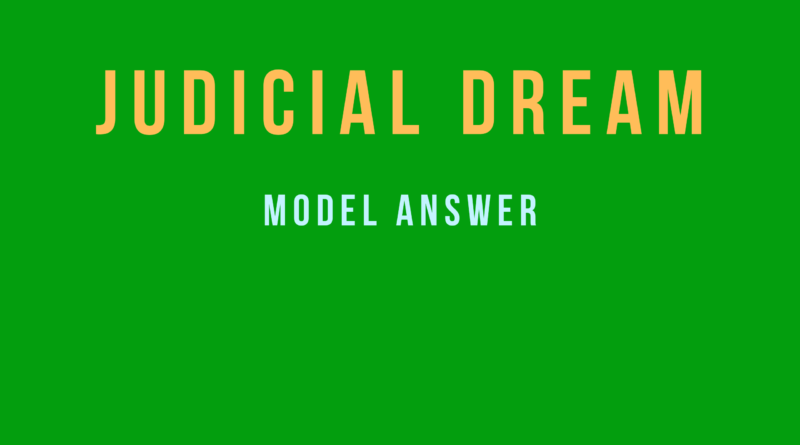IMMOVABLE PROPERTY
Define immovable property.
The Transfer of Property Act does not contain a comprehensive definition of immovable property. As per section 3 of the Transfer of Property Act, Section 3(26) of the General Clauses Act and section 2(6) of the Registration Act, immovable property includes land, benefits arising out of land, things rooted in earth, things embedded in earth, and attached to what is embedded in the earth for its permanent beneficial enjoyment, but does not include standing timber, growing crops and grass.
a) Land:
Land is immovable property. The Land includes surface of the earth until it is removed for example pond, mud, River. It further includes under the surface i.e. water, soil and things above the surface. These are all immovable property. Any interest in these or in respect of these or any other property in it are all immovable property. Besides, well, tube-well, rivers, ponds, tanks, stream, canal dug on surface whether natural or artificial and all interests in these would fall in enumeration of the term “land”.
b) Benefit arising of the land:
Every Benefits arising out of land is regarded as immovable property. The examples of benefits are rent from the house, shops and jagir, revenue from agriculture, right to collect lac , leaf or other things from forest, trees, etc. Moreover, right to enter upon land and to carry away the fish from a lake is a right to profit de prendre and that it is immovable property in India as a benefit arising from the land. Thus, right to profit de prendre are benefits arising from land, and, therefore, immovable property unless they relate to standing timber, growing crops or grass, which are specifically excluded by section 3.
In the case of Anand Behera v. State of Orissa, the right to catch away fish from chilka lake, over a number of years, was held to be an equivalent of profits a pendre in England and a benefits to arise out of land in India.
c) Things attached to the earth:
Things that are attached to earth become part of the earth and are hence called immovable property. This category as per para 6 of section 3 of the Transfer of Property Act divided into three sub parts:
(i) Things rooted in earth
Things rooted in earth include trees and shrubs, except standing timber, growing crops and grasses.
Tress are immovable property as they are rooted in earth and by virtue of section 3 of TP Act, 1882, Registration Act, 1908 and the General Clauses Act, 1897, they are specifically included in the expression ‘immovable property’. Trees can be of various types and can be put to several uses. The Act does not classify them on the basis of their use generally, but simply excludes standing timber. It signifies that those trees which do not fall in the category of standing timber would invariably be covered under immovable property.
In the case of Shantabai v. State of Bombay, the court held that to determine whether the tree is movable or immovable, the intention of party is important. If the parties intend that the tree should continue to have the benefit of further nutriment to be afforded by soil, the tree is immovable property. But if intention is to withdraw the tree from land, and the land is providing it only as a warehouse, it is to be treated as movable property.
(ii) Things embedded in earth
The term ‘things bedded in the earth’ includes such things as house, buildings etc. For eg., an anchor imbedded in the land to hold a ship is not an immovable property
There are two conditions to determine whether such things are movable or immovable property because it is imbedded in the land for the short period of time.
(a) The degree or mode of annexation
The first condition is the mode of attachment of the thing and the consequences of its detachment. It means that when the removal of any property annexed or embedded cause any harm to the land then it will come under the immovable property. If such removal does not cause any harm to the land then it will come under the ambit of movable property.
(b) The object of annexation.
Where the object is to fix the attachment permanently and for a sufficient long period if time, then the presumption is that it will become immovable.
(iii) Things attached to what is so imbedded in the earth for the permanent beneficial enjoyment of that to which is attached.
The things permanently attached to what is embedded in the earth, for the permanent beneficial enjoyment of that to which it is attached are considered as immovable property. There are two requisite factors to determine whether the property is immovable or movable:
a) Things must be permanently attached and it is intended to be used in perpetuity or till the life of the attachment.
b) Attachment constitutes permanent improvement to the thing to which it is attached.
For example, Fans and tube lights holders are permanently attached to the walls/ceilings of a room, the later being immovable property. These attachments are permanent, and are for the better enjoyment of the room, i.e., to which they are attached, and therefore would be termed immovable property.



